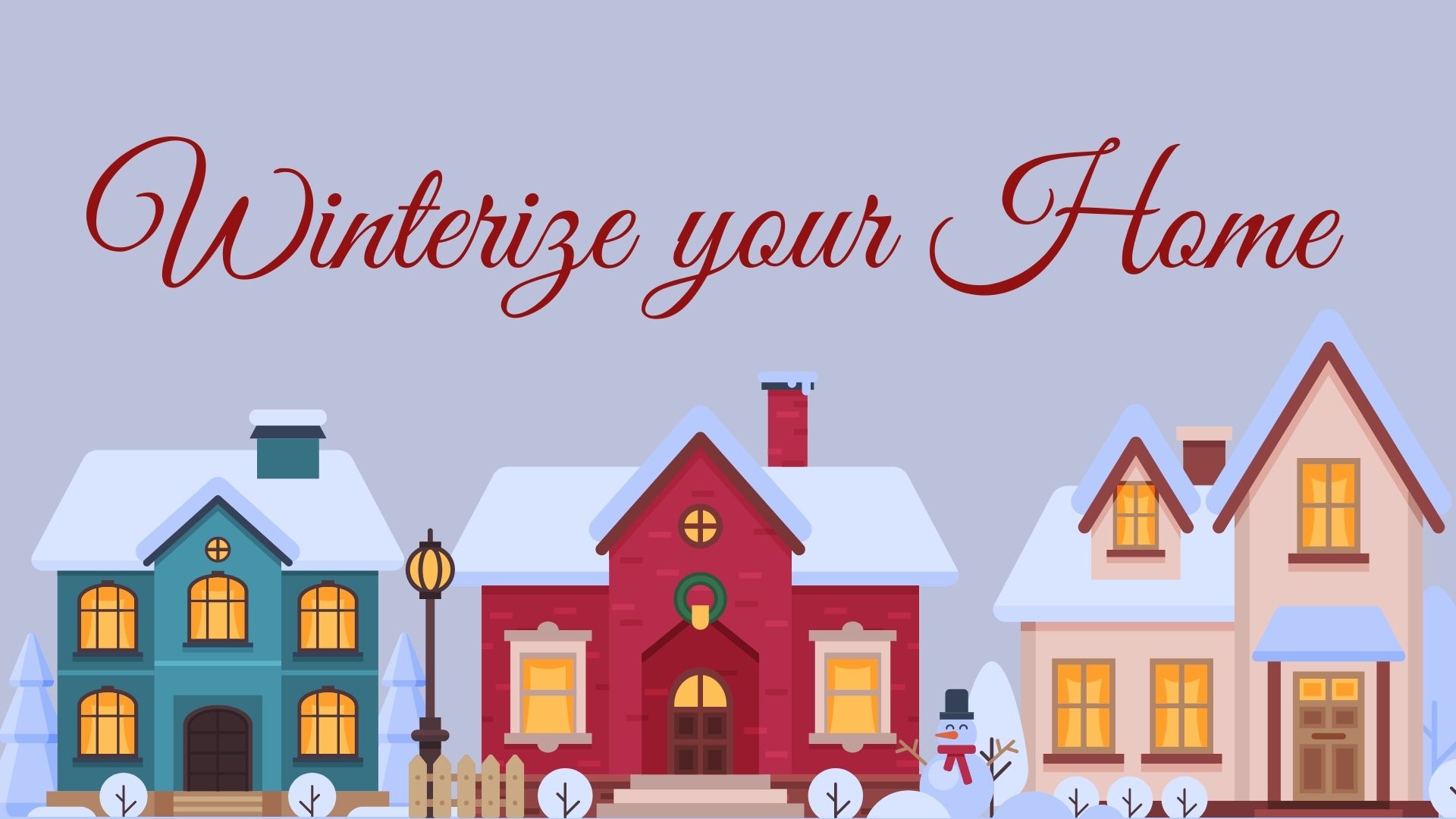Checklist for Winterizing Your Home
Fall is here and we cannot just sit and watch the beautiful skies and foliage…it is time to batten down the hatches in preparation for cold weather. Hopefully, this checklist will help you to have a warm, snuggly, and safe winter.
- Check the gutters.Make sure your gutters and downspouts are clear of debris to avoid overflow.
- Check insulation. Make sure the attic floor is properly insulated. The attic itself should be well-ventilated and about 10 degrees warmer than outside.
- Protect the pipes.Insulate your pipes to keep them from freezing. If the weather becomes extremely cold, a light, steady stream of water in the pipes will help guard against freezing pipes. And be sure to shut off the supply of water to outdoor spigots and sprinkler systems and bleed the pipes of excess water. Detach your garden hoses, drain them, and store them in the basement, shed, or garage for the winter.
- Seal the cracks.Caulk around holes and openings to help prevent cold air from seeping in. Install weather stripping and seals around openings such as windows, doors, air conditioners and mail chutes.
- Stop the slips.Falls occur when sidewalks, steps and driveways are covered with snow and ice. Use snowmelt and shovel. Pay attention to any local regulations dictating when your sidewalks need to be cleared after a storm.
- Have heating checked.Schedule a checkup for your furnace, heat pump, boiler, and/or chimney. These should be serviced at least once a year to clear any buildup and to keep them running efficiently.
- Test your detectors.Check them monthly and replace batteries as needed. If you have gas appliances or gas heat, a wood stove or propane logs, you should install a carbon monoxide detector to avoid inadvertently trapping this toxic gas in your home.
- Clear the yard.Keep the trees trimmed and remove dead branches and debris from your yard. Ice, snow, and wind can weaken trees and cause branches to fall, potentially damaging your roof, siding, gutters, porch railings, deck, and cars, not to mention unsuspecting passersby.
- Check the Exterior.Check your roof for loose or missing shingles and gaps around your chimney, and attic vent or plumbing vents. Check your windows, doors and other exterior openings. Caulk gaps and cracks, and install weather stripping where appropriate.
- Mind the mold.Mold can worsen allergies, trigger asthma attacks, and cause problems for people with compromised immune systems. By securing your home against leaks for winter, you’re helping to keep mold at bay.
And finally, if you are a “snowbird” turn the water completely off and consider having the plumbing system drained to keep pipes from freezing. Also, have a friend or neighbor check on your home regularly to look for any issues.

